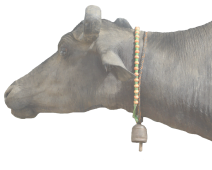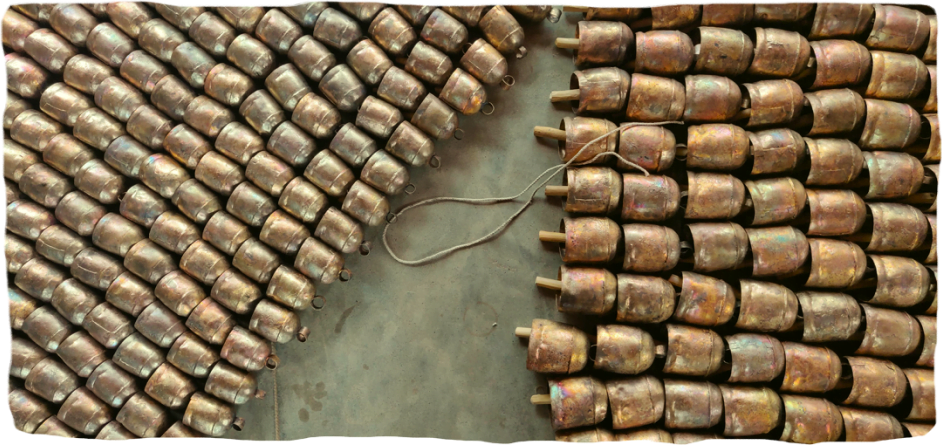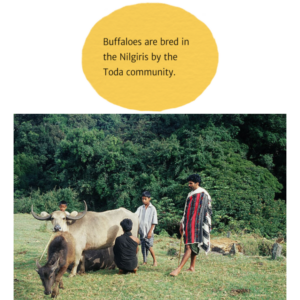Hakkad, Utthod & Sarai
Bells ~ The spokespersons of a herd
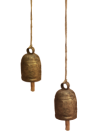
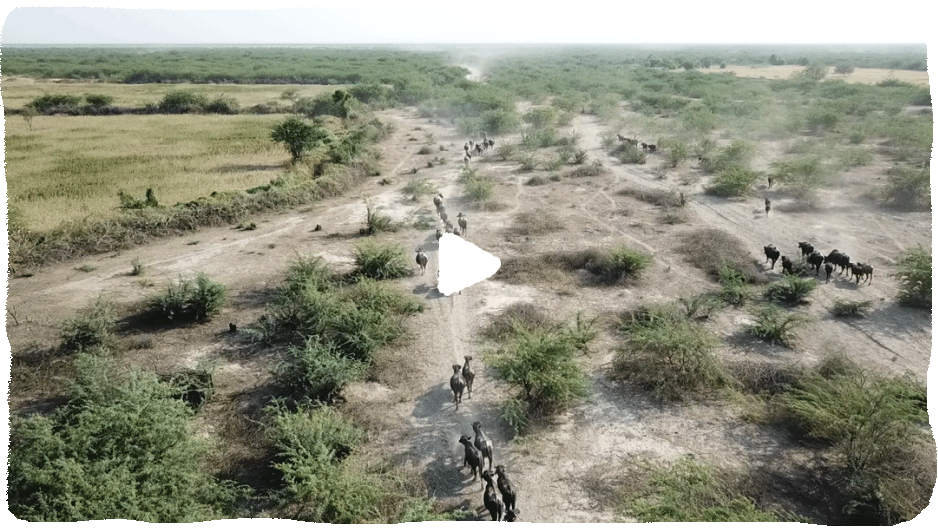


Copper bells are an intrinsic part of herding life; their sounds mark place and identity. Variations in the size and sound of the bell can help identify the breed, the herd, and even the herd’s owner. Three main tones exist – the Sarai, the Utthod, and the Hakkad – each assigned to different types of animals, different age groups within the herd, or different personalities. The bells chime, in different notes, and outline an aural map that will tell the herder where her lead buffalo is, or if a naughty camel has gone astray! On the broadest level, copper bells indicate the general location of a herd. On the finest level, bells placed on designated animals indicate whether it is the front, middle or tail end of a herd that is passing by.
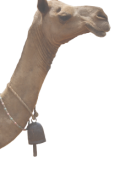
For Whom the Bell Tolls
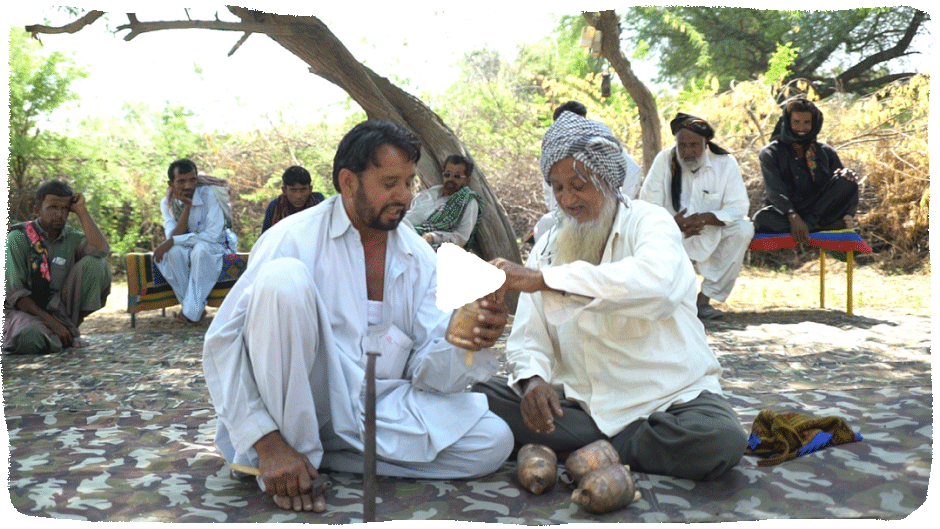
Click the bells to hear their distinct sounds!
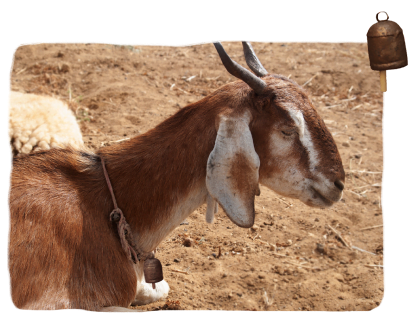
Sarai is the sweetest and most tuneful of all the three sounds, often worn by cows and goats. Sarai notes reverberate for a long while, and serenade many a Maldhari’s hearts!

Utthod is like the Sarai, but only more hearty. Utthod bells are used more often on buffaloes.

Hakkad has a very clear, big sound, and resonates across long distances. Hakkad bells are worn by camels, especially because they like to spread out as they graze.
Let’s hear what Shah Abdul Bhitai, a poet from Sindh has to say about it!
Comforts of the Dark
In the famed Banni grasslands, one of the largest in Asia, the Banni buffaloes have adapted themselves to the scorching heat of the day by grazing in the night, unaccompanied by their herder. As the moon rises, they lose themselves in the vast maze of tall grasses. Hidden from sight, they can be tracked only by the far and clear tinkling of the ‘mattr’, as these bells are called in sindhi.

~ Hasamkaka Raysi, Banni Buffalo
Maldhari from Banni
But what happens when the grassland begins to lose its luxuriant grasses?
In the early 1960s, Banni became home to an exotic shrub – Prosopis Juliflora – locally called ‘ganda bawal’ or the mad acacia, in Banni. The grasslands began to change. This stranger and its dissonant notes entered the stage to slowly hijack the composition. Ganda Bawal has become now a demanding invader and Banni finds it hard to nurture her favourite grasses in its presence. In a land growing more devoid of its luxuriant grasses, the buffaloes are less hidden, and the bells less essential in tracing the Maldhari’s animals.
~ Hasamkaka Raysi, Banni Buffalo Maldhari from Banni
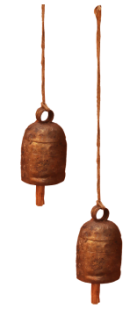
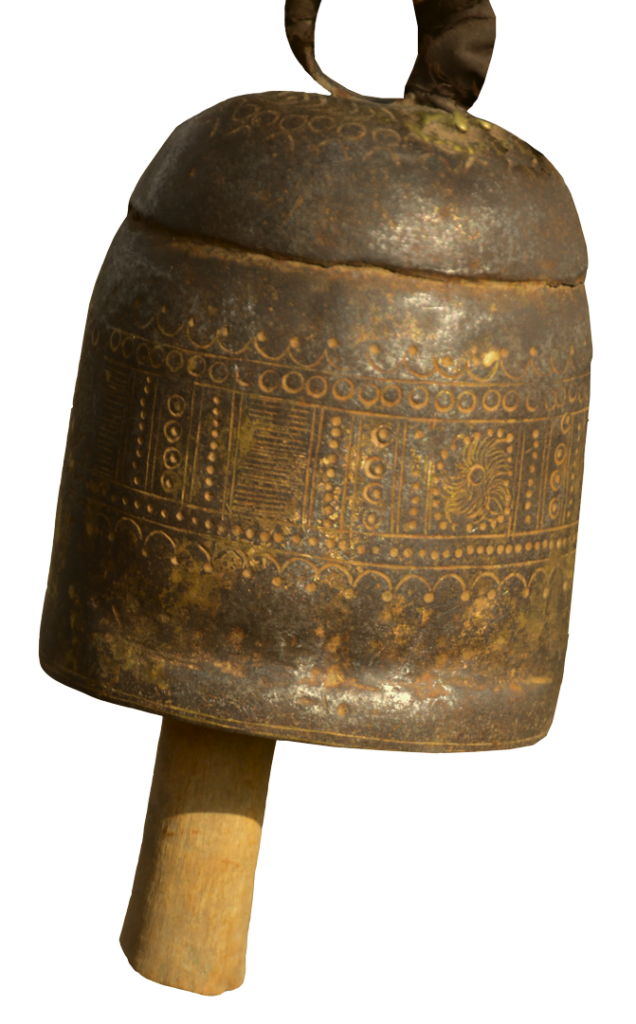
The Luhars still keep the highest quality bells for the herders, who unlike the tourist, does not get enticed by the beauty of the bell, but responds to the emotive presence of the bell.
more than the urban customer for that
special bell. These high cost bells carry a
life-time service agreement. When the
lustre fades, or the sound changes, the
Luhars refurbish the bell with no
questions asked, no payments made.
Even today.


